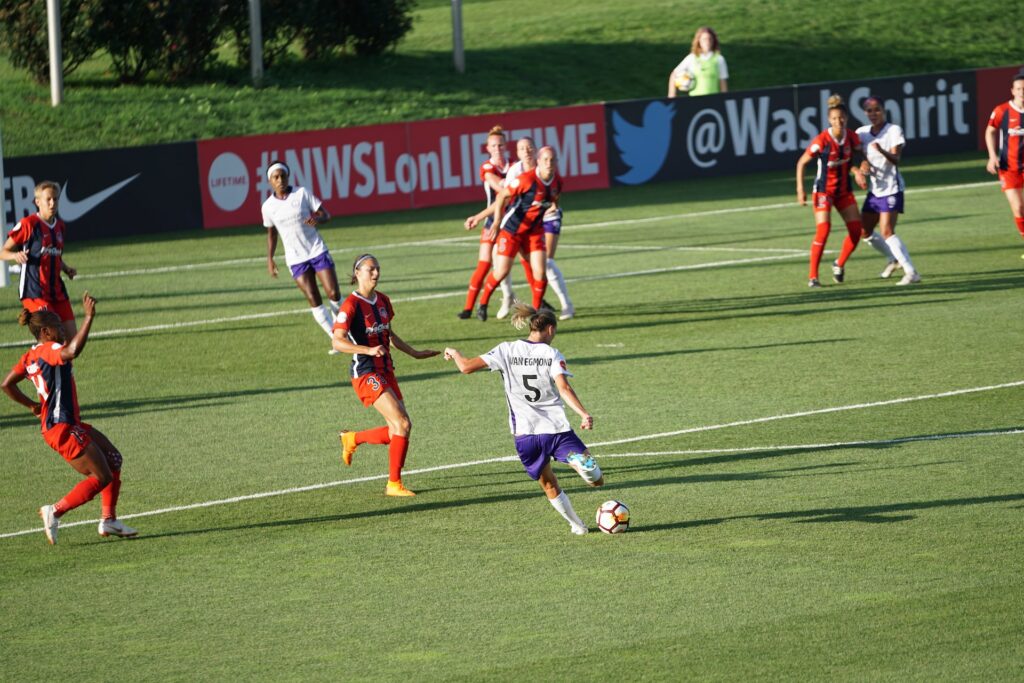Table of Contents
- What is a cross in soccer?
- What is the best type of cross in soccer?
- Can you score from a cross in soccer?
- The benefits of crossing the ball in soccer
- Five tips for using crosses effectively in soccer
- Recap: Utilizing the cross in soccer
The cross in soccer – an important feature of the game or a dying art?!
Poor crosses are the bane of an attacker’s life, but a well-executed cross is a thing of beauty and makes the job of goalscoring so much easier.
So what exactly is a cross in soccer? Is it an important part of the game? What’s the best way to whip a cross into the eighteen-yard box? Let’s take a closer look.
What is a cross in soccer?
A cross is a type of pass made by a player who’s usually positioned out wide, targeting centrally located teammates, often in the penalty box.
Many of the game’s assists that we have seen throughout soccer history have come from crosses, and that remains the case today.
Crosses can either target a specific teammate or are sent into a general area, hoping that any teammate gets on the end of it.
There isn’t one strict way of crossing everybody should perform; they can be delivered with height or along the ground, with the inside of a cleat or the outside, from deep or near the byline.
What is the best type of cross in soccer?
Generally, the best types of crosses are those that are accurate enough for your teammates to connect with while being difficult for the opposition to intercept.
Which one you should deliver really depends on where on the pitch you and your teammates are.
There are different types of crosses that would suit whatever situation your team finds itself in, but any that are delivered into “the corridor of uncertainty,” as the perfect area to cross into has become known throughout soccer.
Let’s analyze crosses from corners as an example: while outswingers (crosses with a trajectory that is curling away from the goal) are more likely to find a teammate than inswingers (crosses that curl toward the goal), inswingers are statistically more likely to lead to goals than outswingers.
That statement might seem contradictory, but when an inswinging cross finds a teammate, the quality of the chance they are presented with is much more threatening than an outswinger.
An explanation for this could be that an inswinger’s path is already heading towards the goal, so when the attacker meets the ball, they only need to glance the ball on rather than generating lots of power like players latching onto outswingers would need to.
However, this doesn’t always come into effect in open play. If you imagine a winger dribbling at pace out wide toward opponent territory, they can deliver an out-swinging cross, one which curls away from the goalkeeper in their stride.
To send in an inswinging cross, they’d need to cut back, thus giving the defense valuable seconds to either get back or set up to face the inswinger.
There is also the option to deliver a drilled, low cross that is often easier to perform but could be easier to intercept or deflect away from the goal.
Floated crosses, sometimes called chipped crosses, don’t tend to have any curl on them, so their trajectory doesn’t deviate greatly. Again, these crosses might be preferred with trying to pick out a specific teammate or for ease of performing, but they’re more easily dealt with by the defending team.
Can you score from a cross in soccer?

Yes, it’s possible to score from a cross in soccer. Sometimes crosses are overhit or get caught in the wind, meaning they can deceive the goalkeeper and fly into the net.
What’s important to establish is intent: if you meant to score, then it won’t be classed as a cross; it would instead be judged as a shot.
When asked in interviews post-game, players won’t always be completely transparent regarding whether they meant to score or not and might therefore take the plaudits for a cross that has inadvertently gone in.
One of the most famous examples of a debated cross/shot was in Japan at the 2002 World Cup.
Brazilian icon Ronaldinho was exceptionally gifted, possessing the ability to pull off unthinkable moments of skill.
It’s for that very reason there’s an argument surrounding his goal in the Samba Boys’ quarter-final victory over England; no other player would even attempt to shoot from where Ronaldinho was; you’d be mad to suggest otherwise.
If it was intentional, and the midfield magician claims that, in fact, it was a shot, then it’s one of the greatest pieces of ingenuity we’ve ever seen on a soccer field. Yet it was so far out and looped so perfectly over the goalkeeper into the top corner that many believe there isn’t a chance he meant it.
Others openly admit when luck goes their way, like Manchester City full-back Kyle Walker when describing his cross that missed everybody yet nestled into the Swansea City net. It’s a rotten feeling when your side concedes a goal like this.
The benefits of crossing the ball in soccer
There are a number of benefits to crossing the ball in soccer, and it often forms a significant part of a team’s game plan. Some of the benefits include:
They can make your opponents mere spectators
Instead of intricately working the ball into the box through work that takes a lot of planning on the training ground, crosses cut out those numerous defenders seeking to disrupt.
They can level the playing field
If you’re playing a team that you know is technically superior to you, pumping crosses into their box when you have the ball means you can attempt to beat them physically rather than playing them at their own game.
They can create panic among defenders
It’s much easier for defenders to read the game when it’s happening in front of them on the grass. However, when the ball is fired from wide, at height, or with curl on it, the dynamics of defending change, so defenders will need to adjust their body positions while assessing the ball’s flight to quell the danger.
They require less build-up play
Rather than shuffling across to assist playmakers in the build-up, attackers can position themselves centrally to distract defenders and anticipate receiving the ball in a more threatening position.
Five tips for using crosses effectively in soccer
- Use the element of surprise – first-time crosses don’t allow defenders the chance to assess the danger around them or set up with teammates, so they can be a challenging threat for them to cope with should you get the delivery right.
- Read the line – clever defenders will set offside traps, particularly from set-pieces, so as an attacking player, you need to watch along the defensive line to keep yourself onside and don’t penalize your team in an opportunistic area.
- Stall if short on numbers – you might have a great opportunity to swing a cross into the box, but there’s no teammate of yours in the target area to get on the end of it. Dribbling at the defender before crossing gets you closer to the goal and provides time for your teammates to move forward. As does checking back and feigning a cross to fool your opponent.
- Keep the ball away from the keeper – nothing is more frustrating for a fan than their side floating a harmless cross directly above the keeper, who will easily catch it. By bending your cross to deceive the keeper, you can pull them out of position and cause confusion among defensive ranks. Otherwise, target a deeper area to avoid the ball being caught.
- Pick your spot – this might have to be done within a glance, and you probably won’t have 100% accuracy, but aiming for that ‘corridor of uncertainty’ is your best bet for worrying the defense.
Recap: Utilizing the cross in soccer
Precision and patience: delivering the right ball at the right time is crucial to your odds of winning.
Now that you know what crosses are and how they can be used effectively keep an eye out for the different ways professional clubs utilize them.

